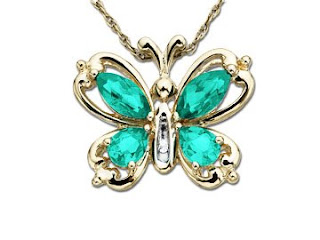 Gemstones in their many shades have fascinated mankind for thousands of years. The ancients attributed magical, mystical powers to each stone, and believed many of them could cure specific ailments. Today, jewelry hounds everywhere revere colored stones as a glittering way to express ourselves outside of the diamond landscape.
Gemstones in their many shades have fascinated mankind for thousands of years. The ancients attributed magical, mystical powers to each stone, and believed many of them could cure specific ailments. Today, jewelry hounds everywhere revere colored stones as a glittering way to express ourselves outside of the diamond landscape. However, precious stones of good size, color, clarity and cut are so rare that a natural, unenhanced fine-quality stone can be worth as much or more per carat than a diamond of comparable quality. Meanwhile, demand has risen for many stones to the point where nature could not possibly produce enough of them in the specifications desired.
As a way to help serve rising demand and make these stones more affordable and available, gem laboratories have produced synthetic stones and simulants that have the look of natural stones at a fraction of the cost. Keep in mind that there are synthetics and/or simulants out on the market for many colored stones, and reputable jewelers will disclose any synthetic gems or gem simulants that they are selling. To understand what you are buying, here are some key facts about these two growing categories.
laboratories have produced synthetic stones and simulants that have the look of natural stones at a fraction of the cost. Keep in mind that there are synthetics and/or simulants out on the market for many colored stones, and reputable jewelers will disclose any synthetic gems or gem simulants that they are selling. To understand what you are buying, here are some key facts about these two growing categories.
Synthetics
Synthetic or "lab-created" stones are grown using the same elements as natural stones. They have the same physical, optical and chemical properties as a natural stone. Lab-created stones also have the same mineral content as naturals. The only difference is that a synthetic stone was created in a factory rather than in the ground. Lab technicians have recreated the conditions of nature and speeded them up by a few million years.
One of the advantages of synthetic stones is that it's easier to get one of large size and good color than it is to get a comparable natural stone. In fact, lab-created gems are usually of better quality than most of the natural gems you'll find in the market today. They have brighter, richer colors and often have fewer "inclusions," or internal flaws, than most natural stones. It takes an experienced gemologist to tell the difference between a high quality lab-created gem and its natural counterpart.
Simulants
Simulants are also grown in the lab. They have an appearance similar to that of a natural gemstone but have different physical, optical and chemical properties.
Gemstone simulants produced in the United States include coral, cubic zirconia, lapis lazuli, malachite and turquoise. Cubic zirconia is the most popular and well-known simulant by far. This man-made stone looks like a diamond but can cost as little as $2 per carat. Of course, it doesn't have the sparkle of a diamond and isn't nearly as hard. Jewelers can easily tell the difference between natural stones and their simulants.
In the past few years, consumer acceptance of synthetic and simulated gemstones has grown - a direct result of consumers recognizing these stones for their own merits, not just as inexpensive substitutes for natural gemstones.
All good news for frugalistas who want to look good without breaking the bank!











No comment for "Gemstone Synthetics and Simulants"
Post a Comment